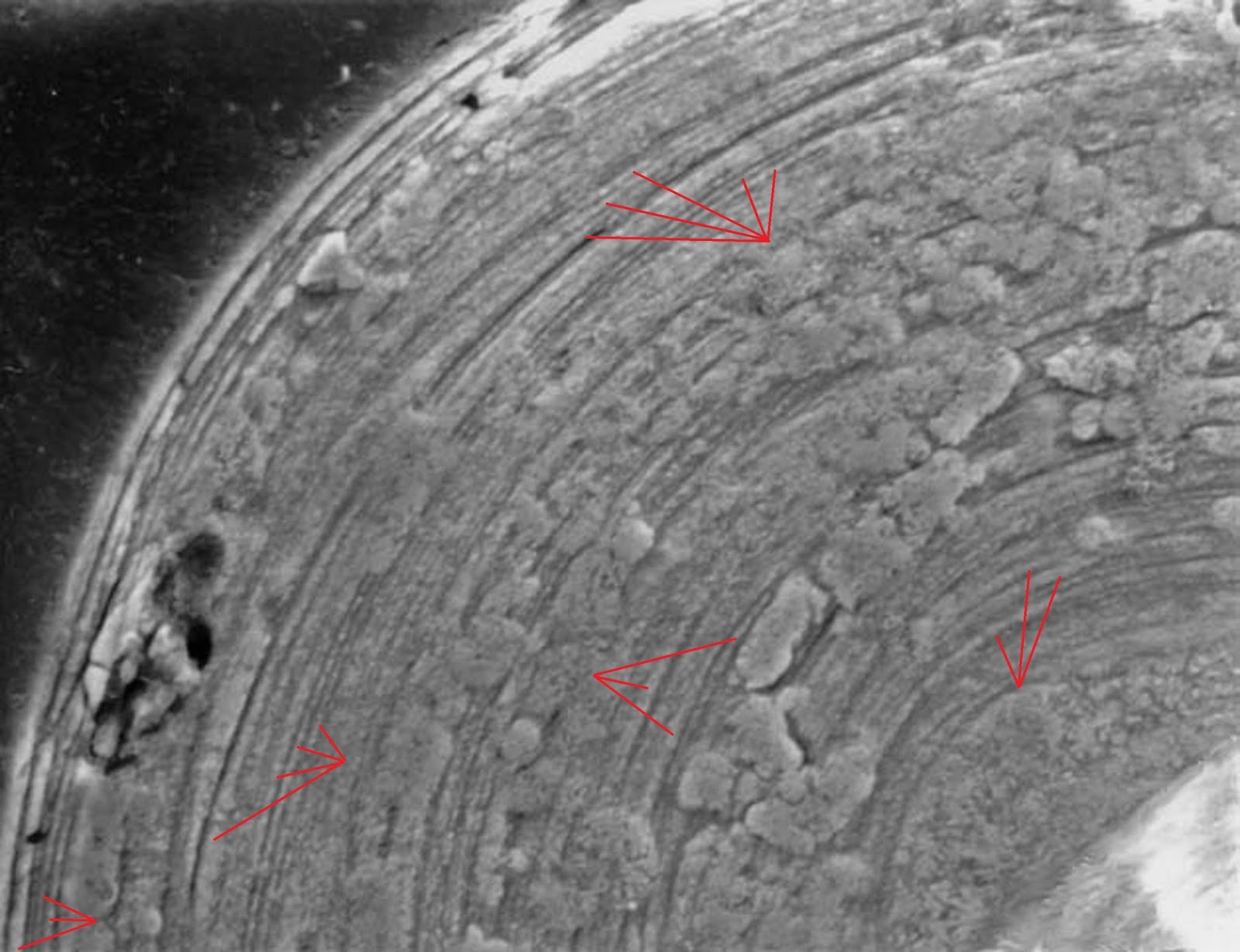

| Online: | |
| Visits: | |
| Stories: |

| Story Views | |
| Now: | |
| Last Hour: | |
| Last 24 Hours: | |
| Total: | |
Geology Does Not Form Ooids.
Thursday, March 31, 2016 0:24
% of readers think this story is Fact. Add your two cents.
Image enlarged from it.wikipedia.org/wiki/Ooliti#/media/File:Ooid_lammelae_cl…
The above image is an electron microscopy showing a cross section of an ooid, which is, by definition, smaller than two mm across. Eighteen red lines mark concentric rings of layers within an ooid. Geological abrasion can not produce such rings.
The above image is an electron microscopy showing a cross section of an ooid, which is, by definition, smaller than two mm across. Eighteen red lines mark concentric rings of layers within an ooid. Geological abrasion can not produce such rings.
In fact, ooids are formed by microbes as evidenced in the following articles:
1. Miller, C. R., & James, N. P. (2012). Autogenic Microbial Genesis of Middle Miocene Palustrine Ooids; Nullarbor Plain, Australia. Journal of Sedimentary Research, 82(Harrison 1977), 633–647. http://doi.org/10.2110/jsr.2012.60
2. O’Reilly, S.S., Klepac-Ceraj, V., Winter, A.R., Bosak, T., McDermott, F., Summons, R.E.(2015). Molecular evidence for a microbial role in modern ooid formation and implications for their occurrence and meaning in the geological record. Astrobiology Science Conference 2015 http://www.hou.usra.edu/meetings/abscicon2015/pdf/7317.pdf
3. Plee, K., Ariztegui, D., Martini, R., & Davaud, E. (2008). Unravelling the microbial role in ooid formation – results of an in situ experiment in modern freshwater Lake Geneva in Switzerland. Geobiology, 6(4), 341–350.http://doi.org/10.1111/j.1472-4669.2007.00140.x
4. Summons, R. E., Bird, L. R., Gillespie, A. L., Pruss, S. B., Roberts, M., & Sessions, A. L. (2013). Lipid biomarkers in ooids from different locations and ages: Evidence for a common bacterial flora. Geobiology, 11(5), 420–436.http://doi.org/10.1111/gbi.12047
Source: http://wretchfossil.blogspot.com/2016/03/pure-geology-does-not-form-ooids.html



